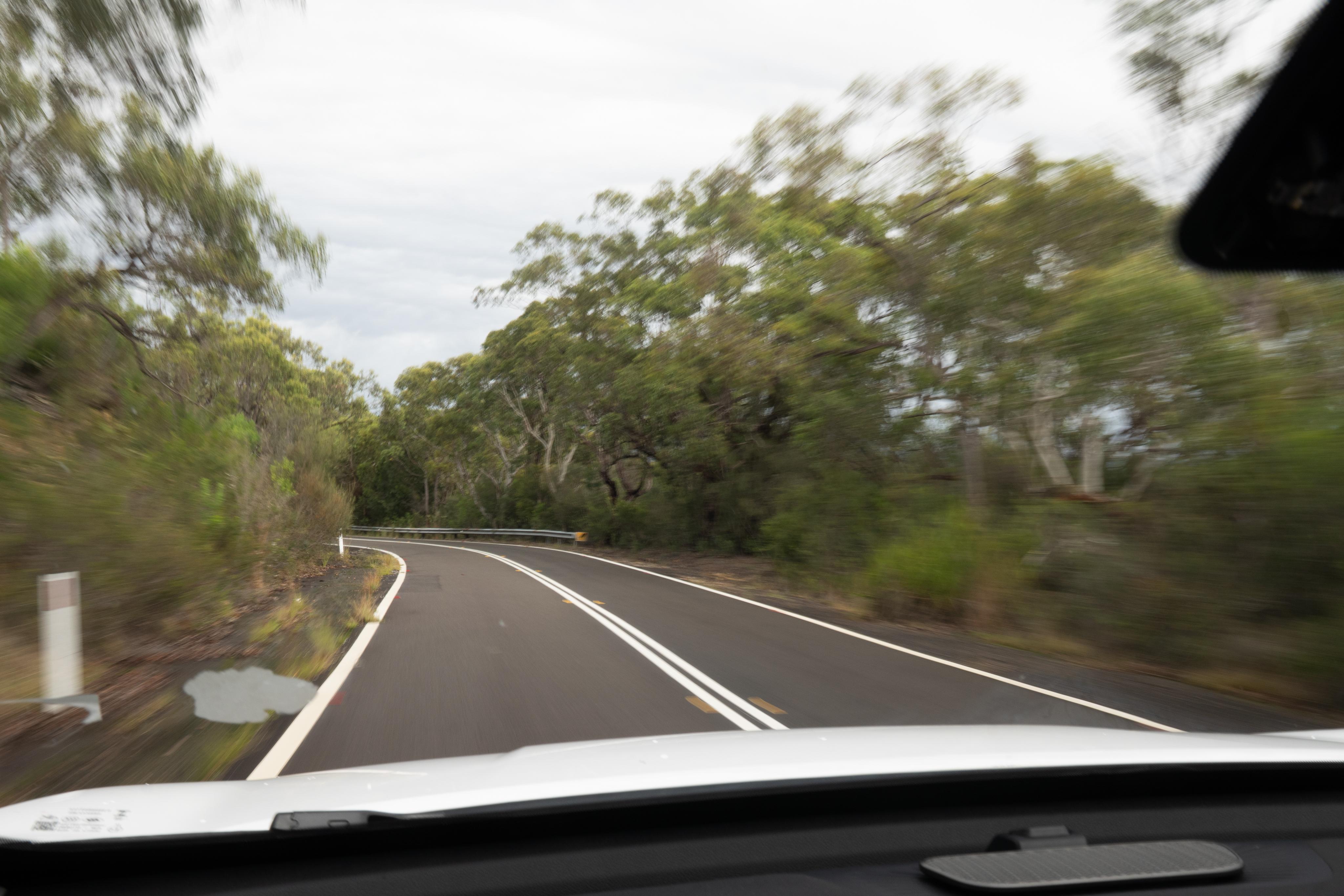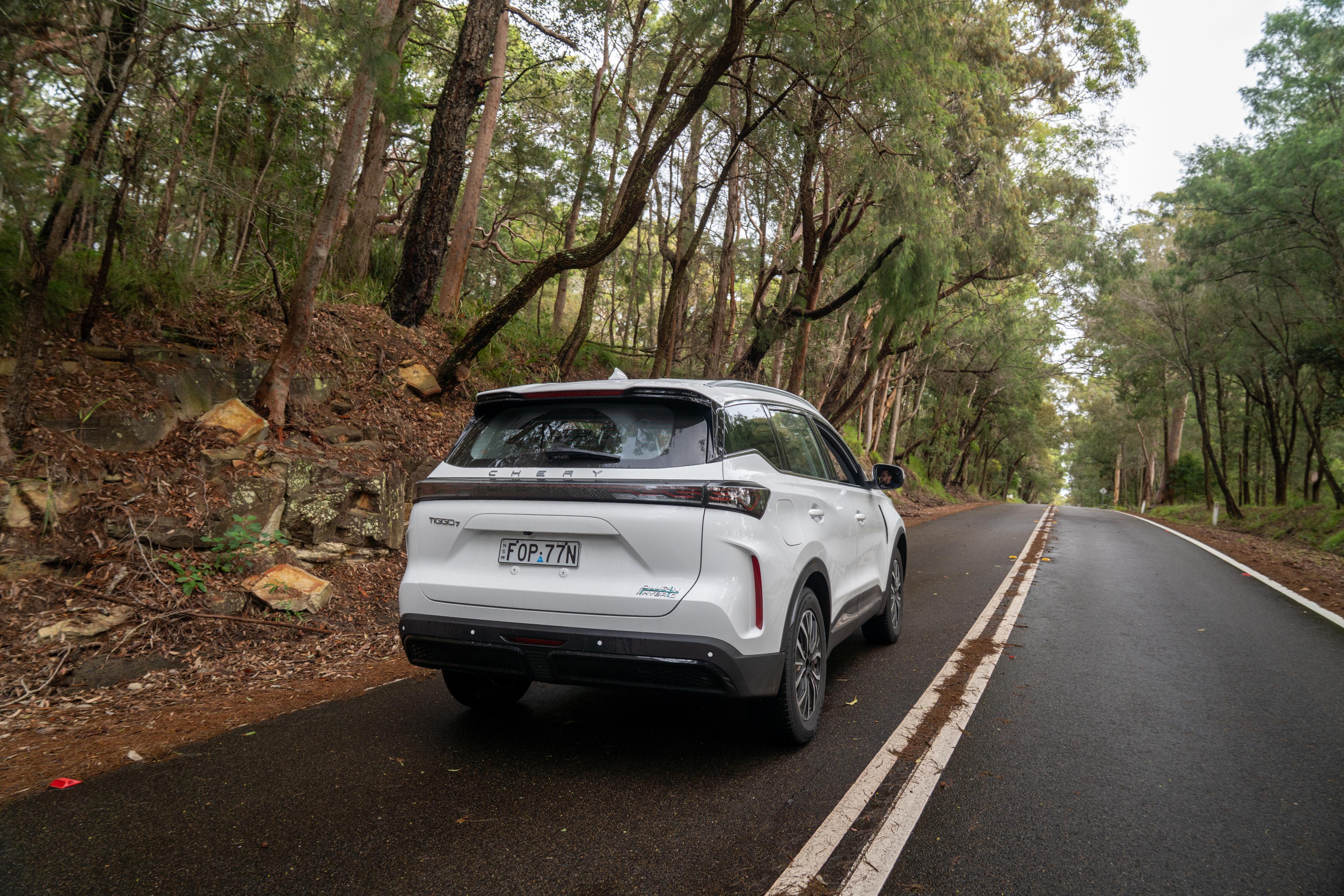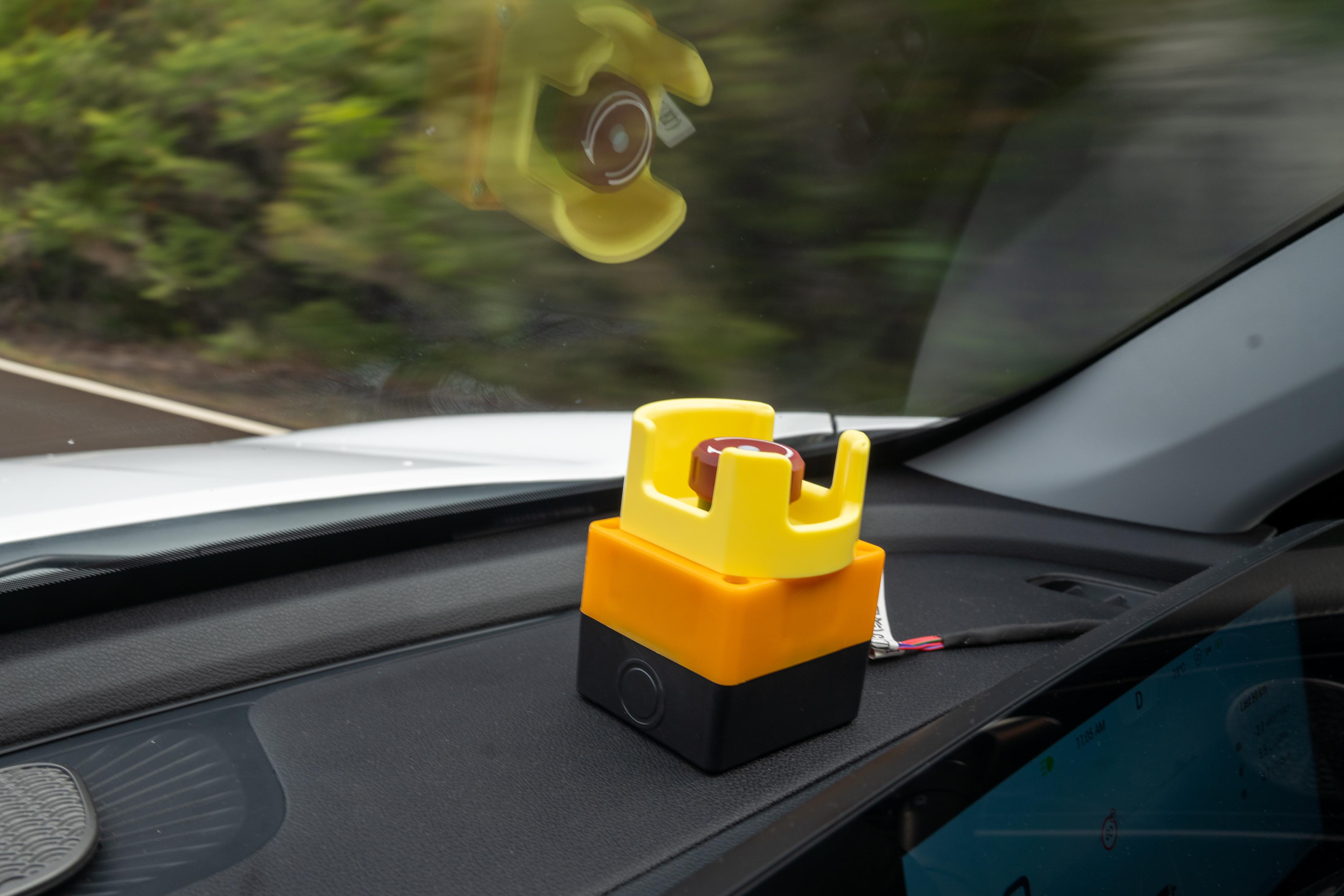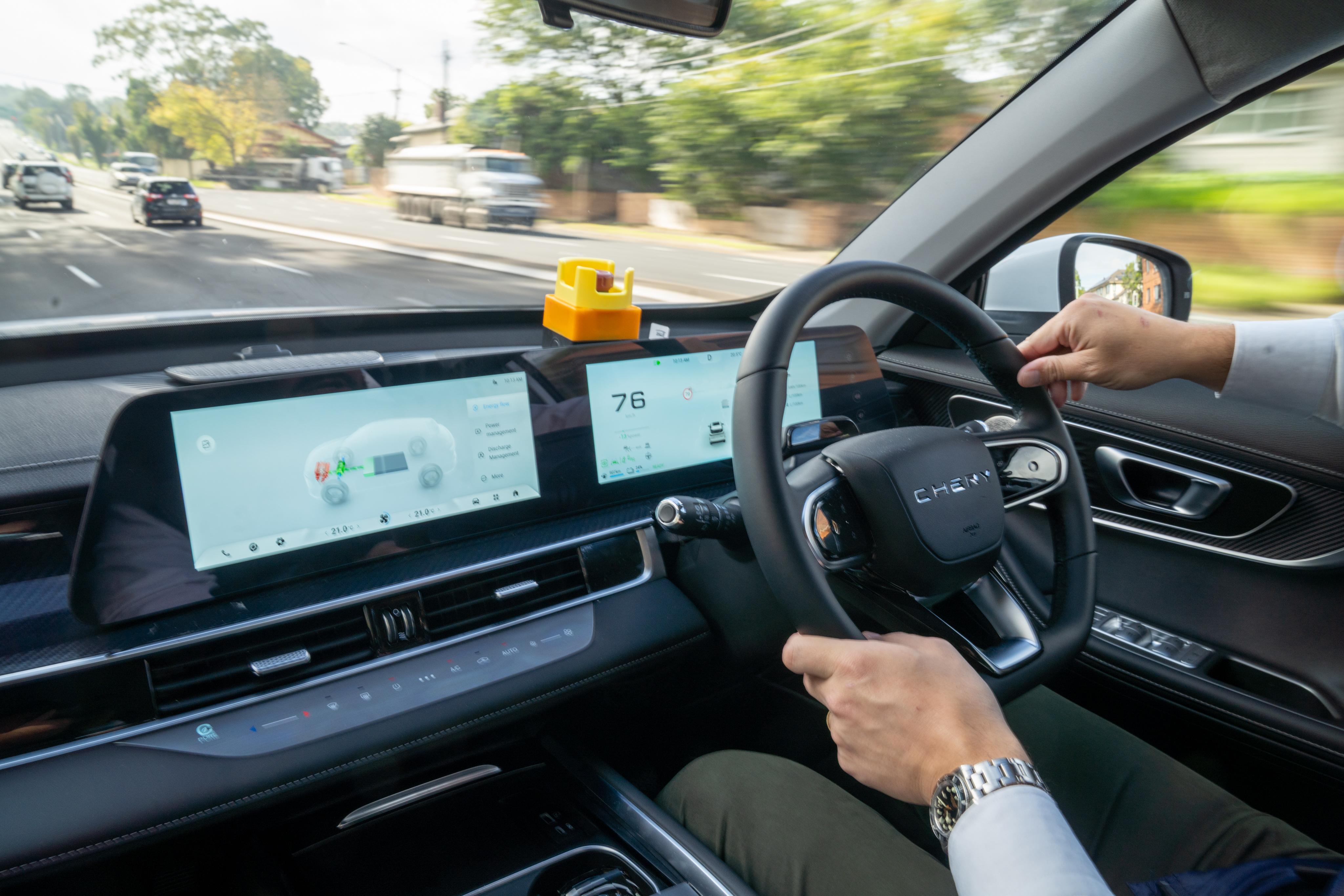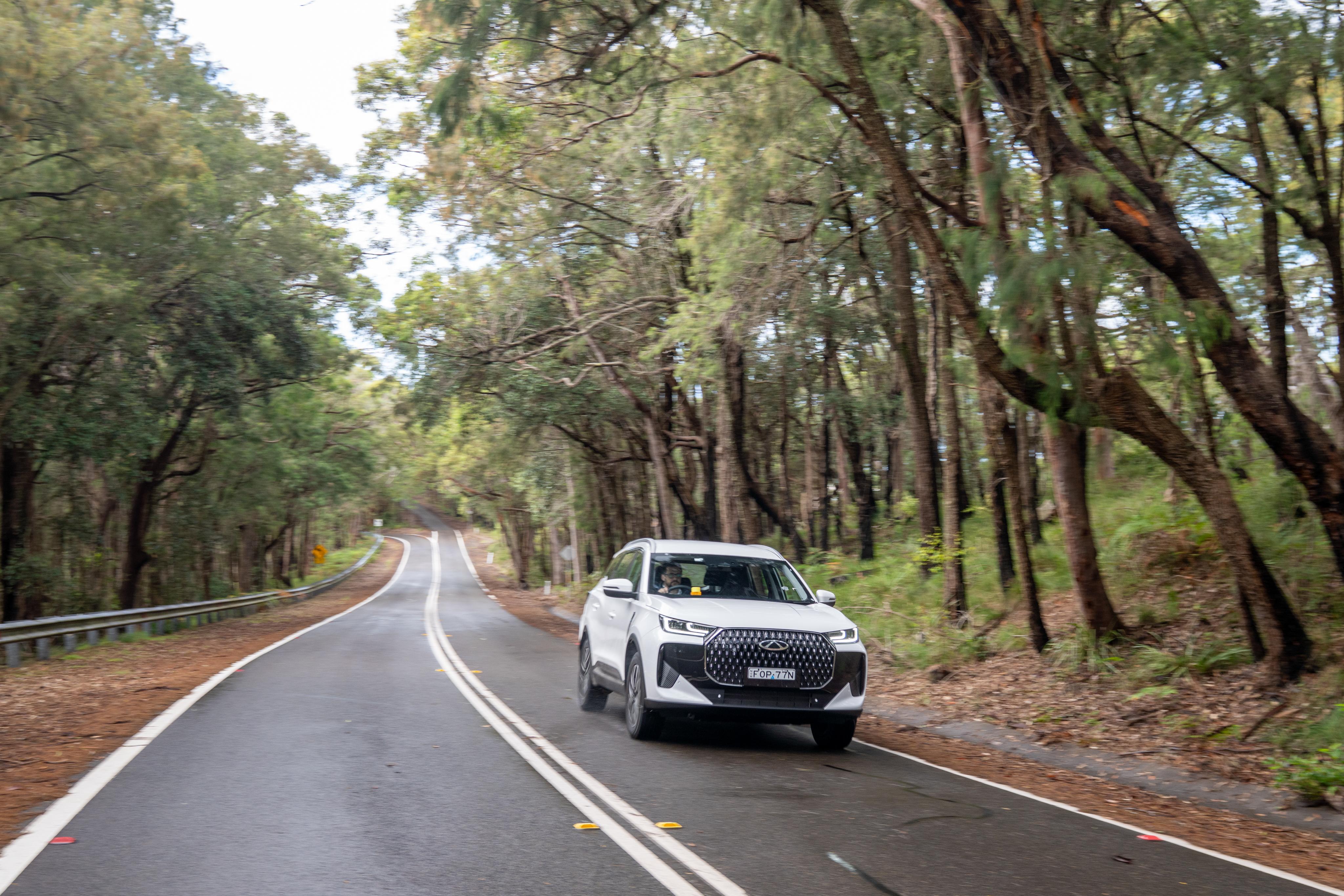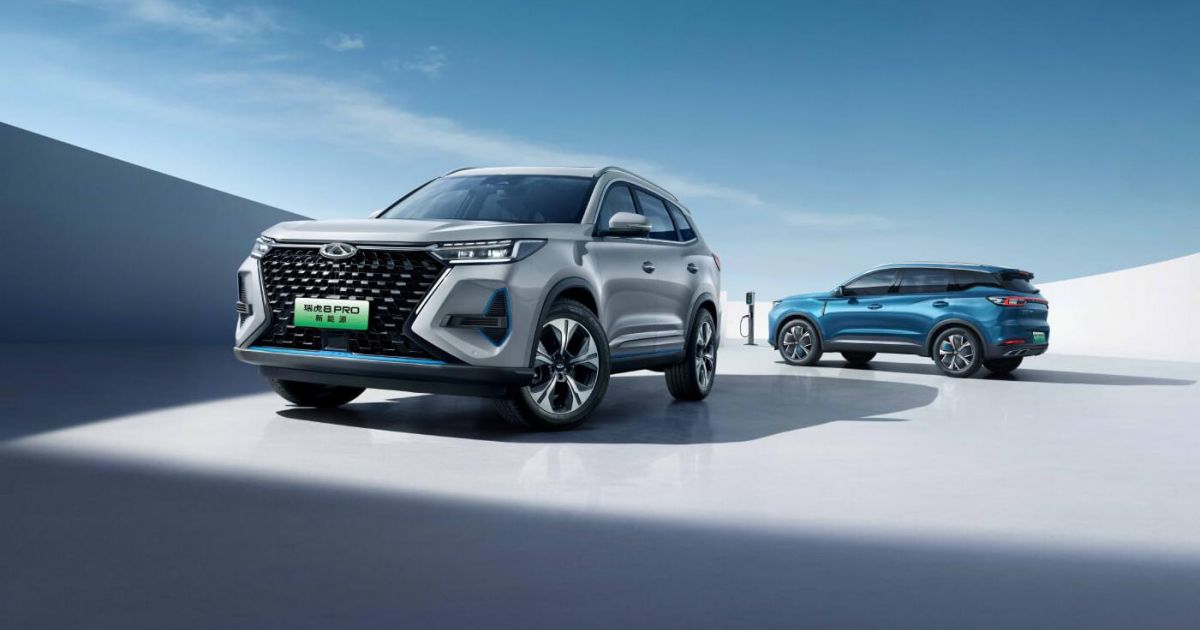Automotive proving grounds are mysterious places. They’re usually hidden in far-flung pockets away from prying eyes to keep the next generation of four-wheeled innovations shrouded in secrecy.
But not today. Our proving ground is surrounded by chicken shops rather than chicken wire fences. And we’re in plain view of the general public on a test loop through the streets of Sydney. There is no hiding here.
Then again, there’s not much to hide, and certainly no need for a disguise, as we’re riding shotgun in a Chery Tiggo 7 plug-in hybrid that looks remarkably like the standard petrol-powered version of the mid-size SUV – save for a few cosmetic details and badges on the outside, and a large red emergency shut-off button on the dashboard – that has been on sale locally since late last year.
Hundreds of new car deals are available through CarExpert right now. Get the experts on your side and score a great deal. Browse now.
-
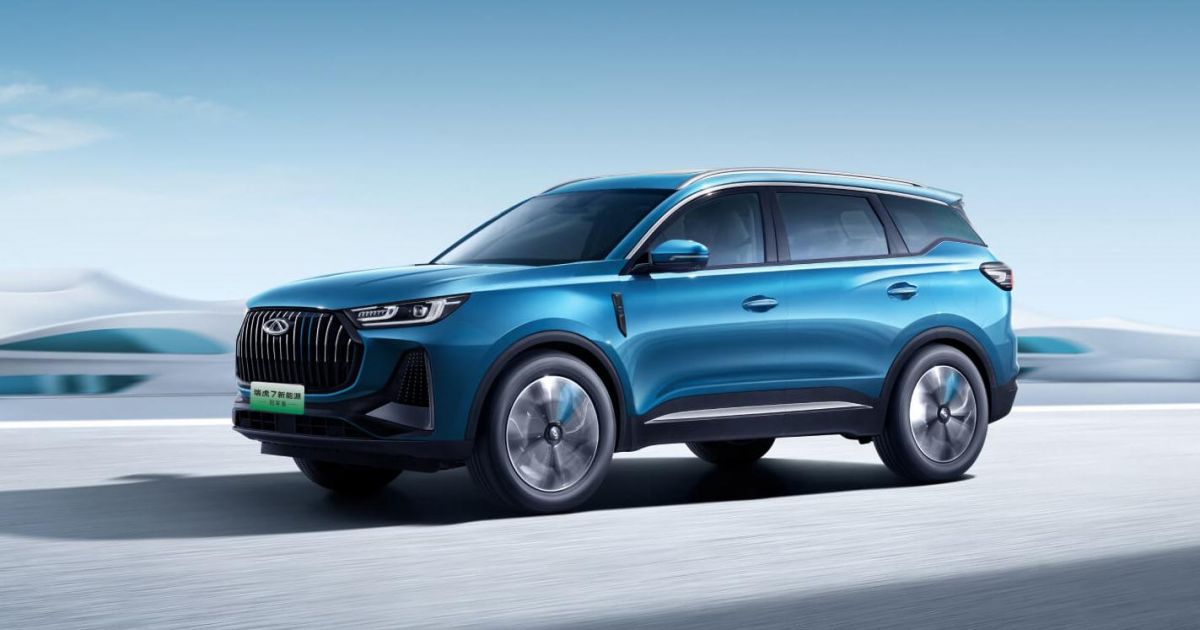
2025 Chery Tiggo 7 PHEV
Ahead of the local release of the Tiggo 7 PHEV in the next couple of months, we joined Chery Australia CEO Lucas Harris during the final phase of validating the local calibration for its comprehensive suite of Advanced Driver Assist Systems (ADAS), which includes automated emergency braking (AEB), adaptive cruise control, lane keeping assistance and other key safety functions.
Mr Harris is part of group of executives and expert technicians at Chery – both locally and internationally – that test and tune the automaker’s vehicles to suit Australia’s unique consumer demands and road conditions.
Chery isn’t alone in doing this sort of local vehicle development work. In fact, almost every automotive brand in Australia has some form of checks and balances process prior to vehicles being delivered to showrooms to make sure they function properly on local roads.
-
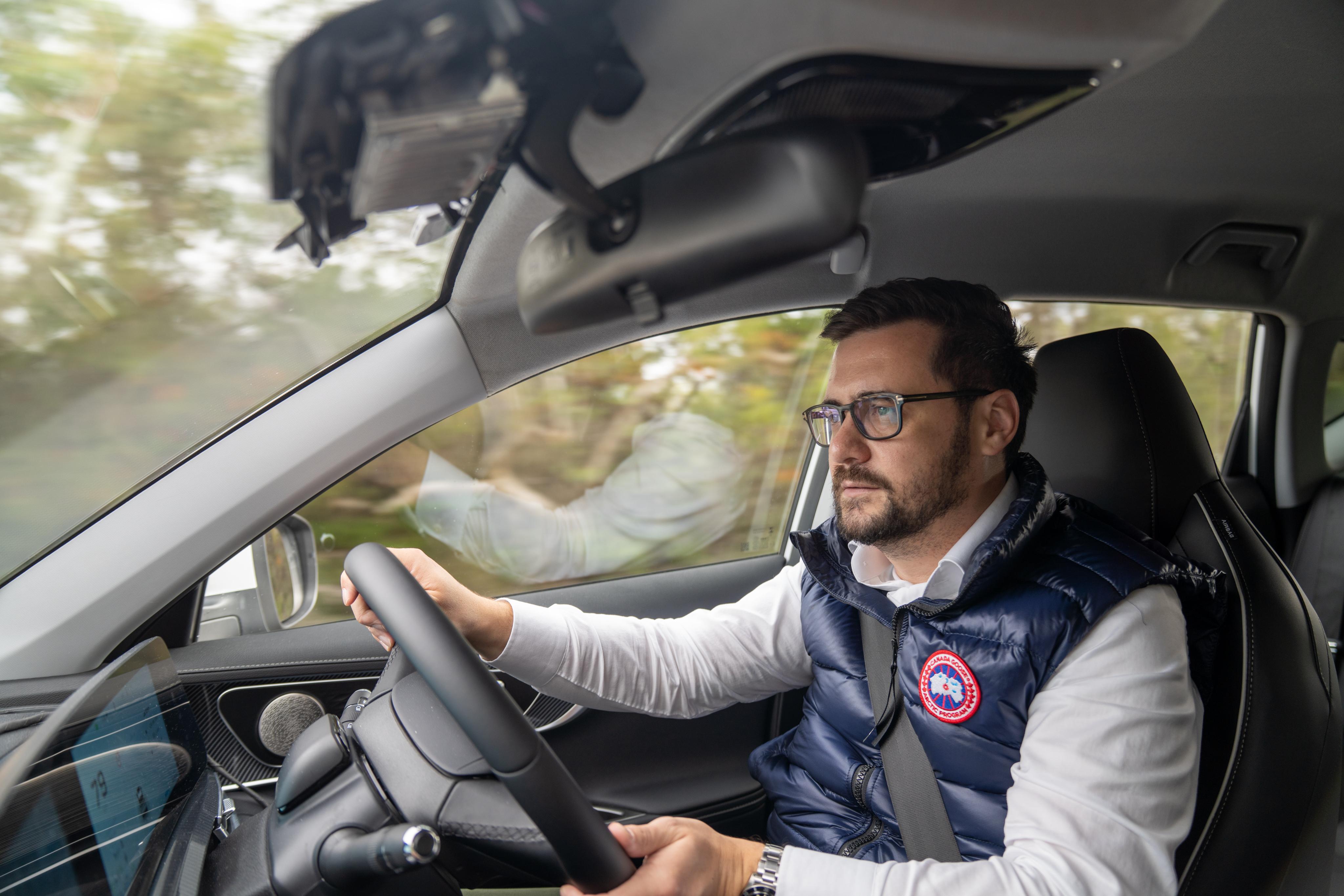
Chery Australia COO Lucas Harris
For some, it’s little more than a box-ticking exercise, extending to tweaking minor vehicle features like radio tuning, while others go to enormous lengths – and considerable capital investment – to tailor the driving character of their vehicles especially for Australia.
Mr Harris admits that Chery learned an early lesson that it needed to do more than just the basics, especially with the calibration of its active safety systems which were heavily criticised by pundits – including CarExpert – in models such as the Omoda 5 small SUV when it relaunched the brand here in 2023.
“We’ve copped a fair amount of, shall we say, constructive criticism about our systems, which I think has all been quite fair,” he says.
-

Chery Tiggo 7 PHEV ADAS hardware
“Every now and then it’s a bit exaggerated, but that’s how the world goes around. I like the criticism though, because it makes it really easy for us to identify what we need to work on next and where we need to improve. So, most of our effort to date has been around how that ADAS system operates.”
ADAS systems are a complex array of unique functions that are intended to improve the safe operation of a vehicle. But some are more annoying in how they intervene, forcing drivers to switch off many of the functions, which is clearly counterproductive to their purpose.
They are all linked to an array of cameras and sensors positioned around the vehicle, providing it with a binary view of its surrounding environment. It’s therefore all in the computer coding and algorithms of how that information is used – along with the physical inputs of the driver through the steering, throttle and brakes – as to how effective the functions are. And, importantly, how natural they feel to the driver.
Interestingly for us today, the Tiggo 7 PHEV features Chery’s next-generation ADAS hardware and software suite, and will be the first model to make it available to Australian consumers.
Mr Harris says the reason Chery is investing in fine-tuning its ADAS calibration for Australia is, quite simply, the huge variation of road conditions we have in this country.
“On our drive loop today, which is only about one and a half hours long, just note how many different types of roads we are driving on, not just the surface and condition of the tarmac, but also the lane widths and markings,” he says as we trundle along the narrow three-lane Silverwater Road in heavy traffic.
“Some roads are beautiful, and others are simply dreadful. Some have hard kerbs on the edge, some have grass verges with lines, and some have no lane markings on the edge at all. That’s just here in Sydney’s suburbs, let alone the variation around the country.
“Compare that to the roads in China, which are very consistent, and that’s why it is important for us to get our cars right for the market here.
“I don’t think Australian consumer expectations are unreasonable; it is just that we have a much wider mix of scenarios in which they use the vehicle.”
Mr Harris says a typical tuning program like this takes around 12 months “depending on how rough the starting position is” and begins with initial feedback from the validation group after driving an early pre-production vehicle.
From there, the team will debate the outcomes, which he said “can get quite exciting sometimes”, to form a collective opinion which is then relayed back to the engineering team in China to develop corrective measures.
Every new software change is scrutinised again over the exact same drive loop and any further refinements are fed back to the engineering team in China. The team will do this over and over until they are satisfied the system operates as expected.
“The benefits we’re seeing from this are huge, because all the learnings accumulate,” said Mr Harris.
“We might spend 40 to 50,000 kilometres on this particular car, but that doesn’t mean the hundreds of thousands of kilometres we’ve done before have gone to waste, because the data is relevant to improving the ADAS in all our models.
“Essentially, each time we do this, we’re improving tenfold. And the Tiggo 7 PHEV is easily the best car we have launched yet – and not just because it has the latest hardware in it.”
It’s impossible to judge from the passenger seat if Mr Harris is right and how effective the changes are. But even as he and I hold an uninterrupted hour-long conversation with many hand gestures and plenty of finger pointing from the driver’s seat, there is a conspicuous absence of binging-and-bonging from the driver monitoring system. And no sudden sideways jerks from the lane keeping assistance system, other than when provoked it to demonstrate how smooth it is.
Mr Harris says the team has played particular attention to the latter system, and developed some unique solutions to help it intervene more naturally. He showcases this by moving into the inside lane on Lane Cove Road and driving closely, but parallel, to the roadside kerbing.
“Here, we’ve got three very narrow lanes and sometimes you’ll be driving with very little distance between the left-hand wheels and the kerb. That’s just the way it is,” he says.
“It’s a 70km/h speed limit and it goes up and over crests and around corners. It’s a difficult road for the system to determine. Before, it would have tried to steer away from the kerb just because of a pre-set distance, even if you were driving consistently. But now, we’ve re-set the parameters according to the width of the lane.
“On a narrow lane like this, the system will be supressed fractionally so it doesn’t feel hyperactive, while it will act differently on a wider country road for example.
“I think we’ve found a sweet spot where you will not get unnecessary or unrequired activations.”
The proof will be in the pudding when we get behind the wheel of the Chery Tiggo 7 PHEV to assess the improvements for ourselves in the next month or so.
Until then, keep an eye on the traffic around you because the car in the next lane might just be doing something more important that getting point A to B.

